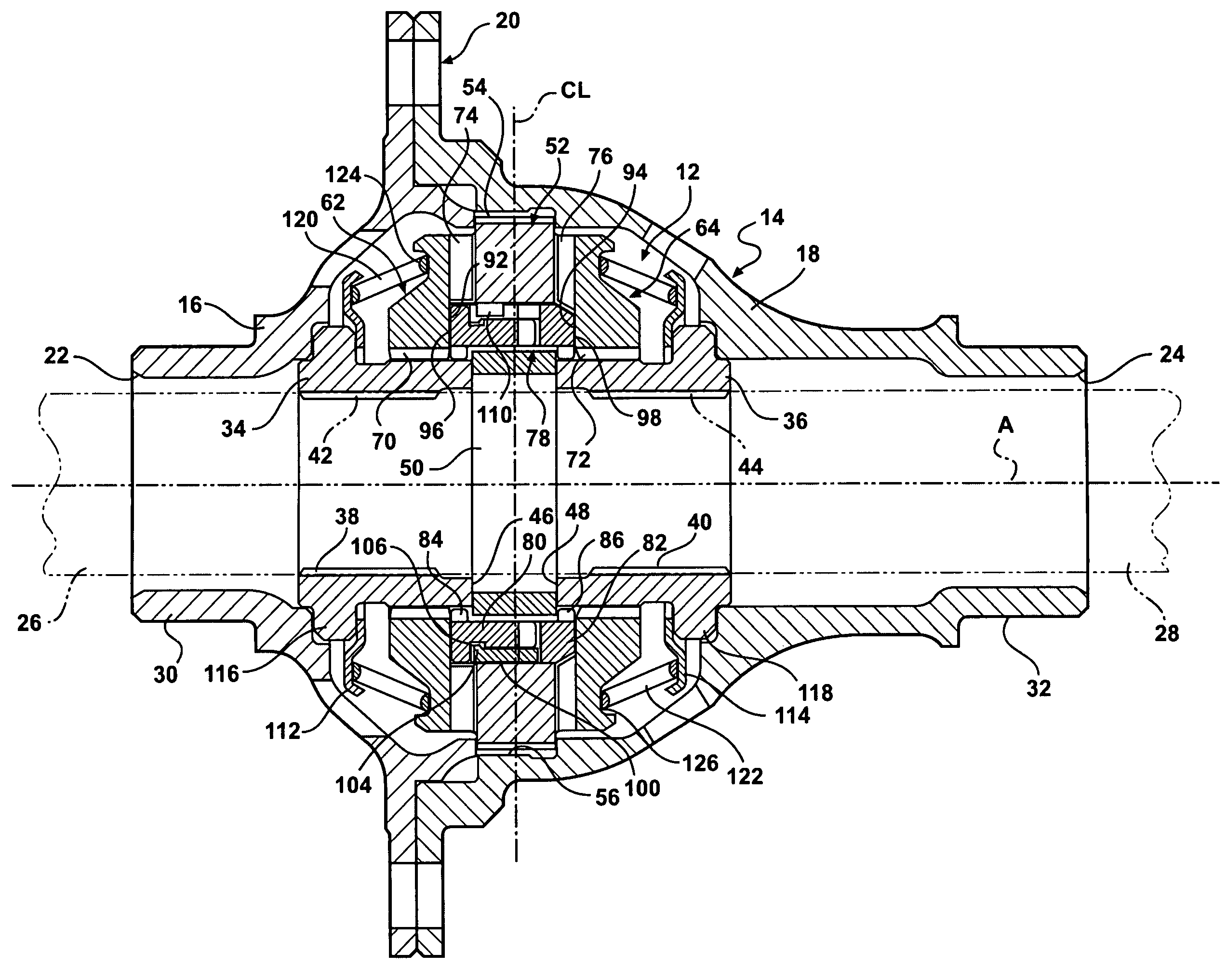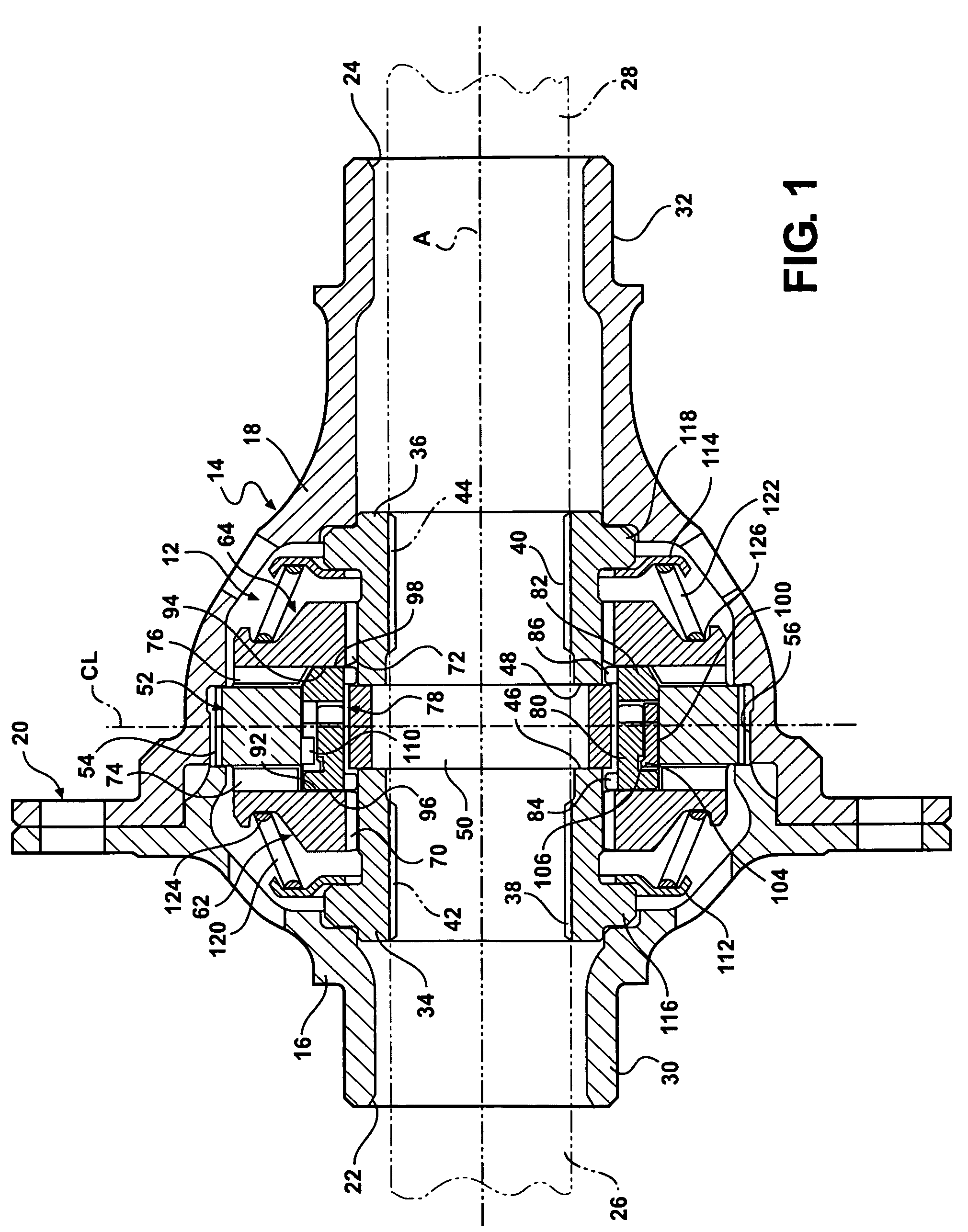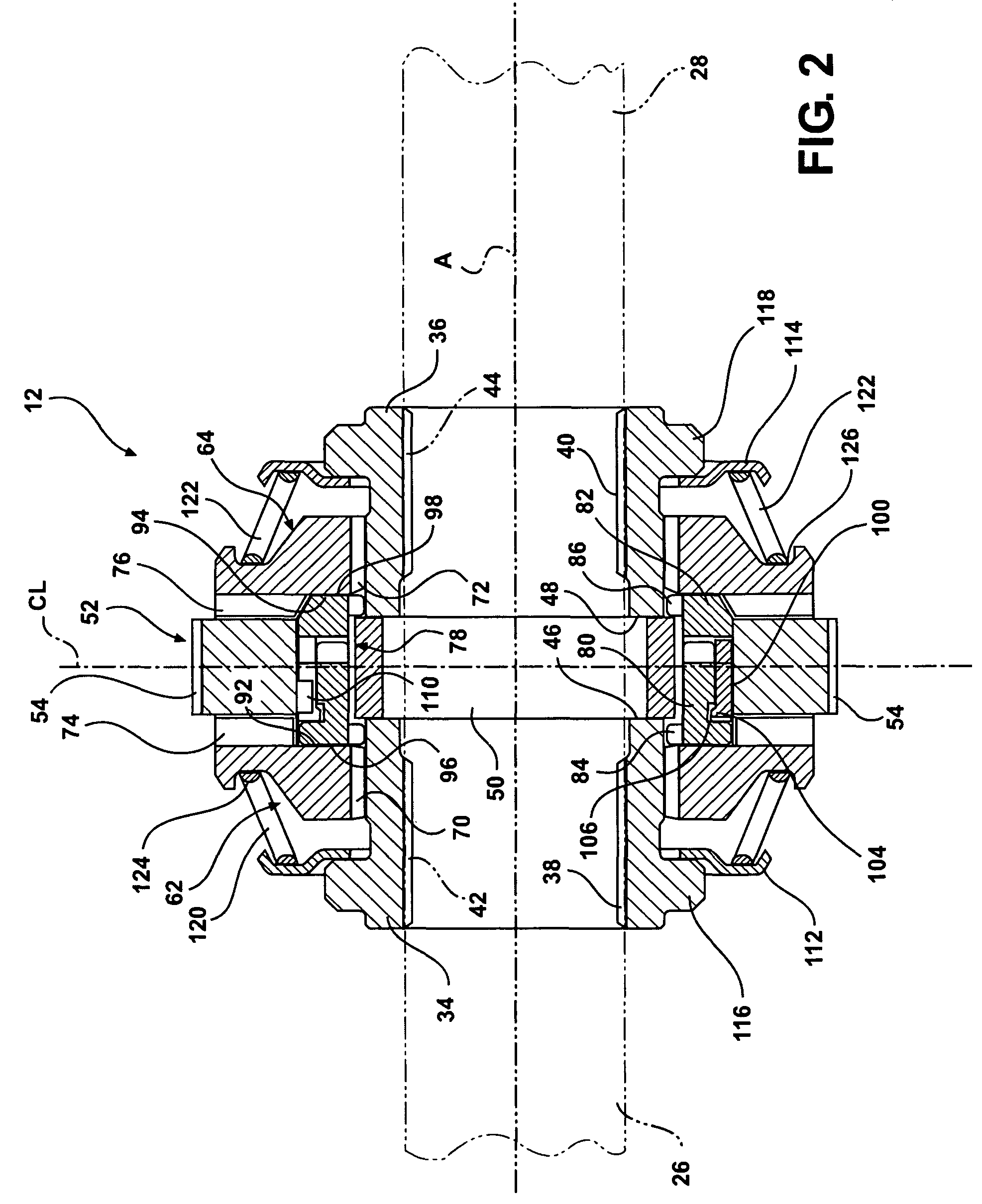Locking differential
a technology of locking differential and cam tooth, which is applied in the field of differentials, can solve the problems of less than ideal interaction between cam tooth and clutch drive teeth, relatively mechanically complex locking differential types of the type commonly known in the art, and increase the cost of manufacturing devices, so as to reduce the number of hold out rings, reduce the number of internal wear, and reduce the effect of internal wear
- Summary
- Abstract
- Description
- Claims
- Application Information
AI Technical Summary
Benefits of technology
Problems solved by technology
Method used
Image
Examples
Embodiment Construction
[0017]A representative portion of a vehicle drive train for supplying torque from a driveshaft (not shown) to a pair of aligned output shafts (shown in phantom at 26, 28 in FIGS. 1 and 2) is generally illustrated in FIGS. 1-4, where like numerals are used to designate like structure throughout the drawings. Those having ordinary skill in the art will appreciate from the description that follows that the purpose of the figures is to illustrate one example of the invention and are not meant to limit it. The drive train includes a locking differential mechanism, generally indicated at 12 in FIGS. 1 and 2, that is operatively supported in a differential housing, generally indicated at 14 in FIG. 1. The housing 14 may be configured in any suitable way commonly known in the art. For example, in the representative example illustrated in FIG. 1, the housing is defined by two pieces 16, 18 that are operatively mounted together at a flange coupling, generally indicated at 20. A ring gear (not...
PUM
 Login to View More
Login to View More Abstract
Description
Claims
Application Information
 Login to View More
Login to View More - R&D
- Intellectual Property
- Life Sciences
- Materials
- Tech Scout
- Unparalleled Data Quality
- Higher Quality Content
- 60% Fewer Hallucinations
Browse by: Latest US Patents, China's latest patents, Technical Efficacy Thesaurus, Application Domain, Technology Topic, Popular Technical Reports.
© 2025 PatSnap. All rights reserved.Legal|Privacy policy|Modern Slavery Act Transparency Statement|Sitemap|About US| Contact US: help@patsnap.com



